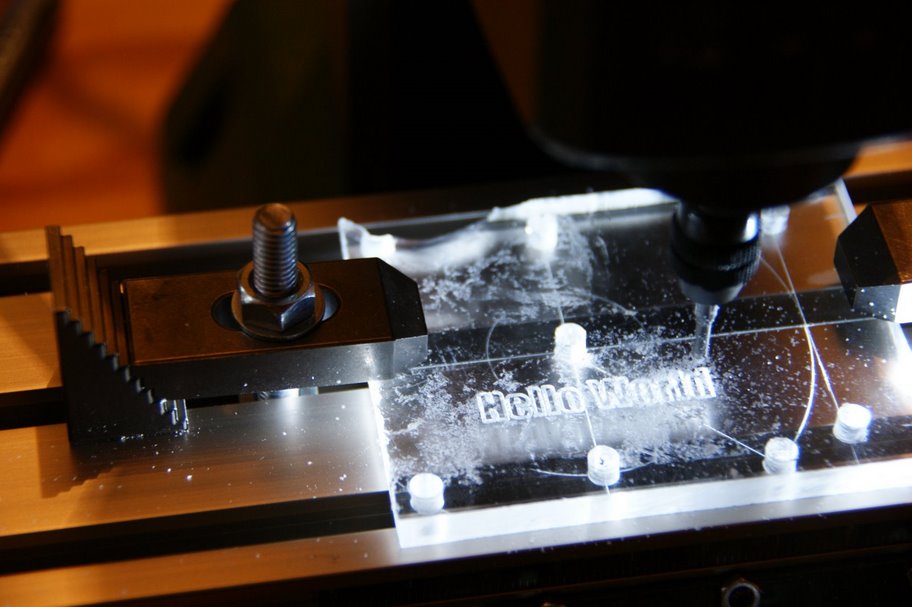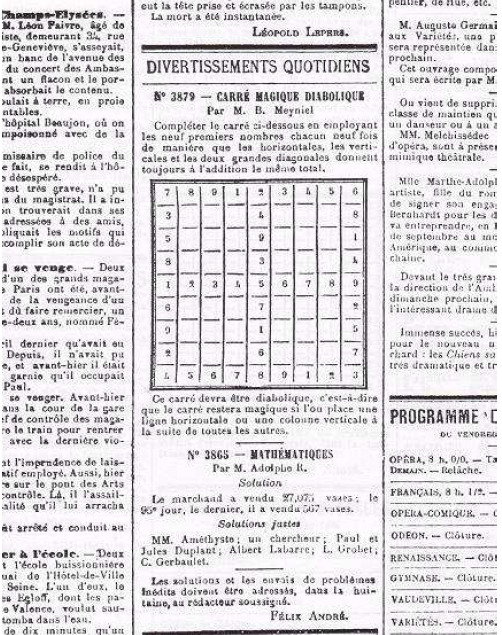|
PyGTK
PyGTK is a set of Python (programming language), Python Adapter pattern, wrappers for the GTK graphical user interface library (computer science), library. PyGTK is free software and licensed under the LGPL. It is analogous to PyQt/PySide and wxPython, the Python wrappers for Qt (framework), Qt and wxWidgets, respectively. Its original author is GNOME developer James Henstridge. There are six people in the core development team, with various other people who have submitted patches and bug reports. PyGTK has been selected as the environment of choice for applications running on One Laptop Per Child systems. PyGTK will be phased out with the transition to GTK version 3 and be replaced with PyGObject, which uses GObject Introspection to generate bindings for Python and other languages on the fly. This is expected to eliminate the delay between GTK updates and corresponding language binding updates, as well as reduce maintenance burden on the developers. Syntax The Python code belo ... [...More Info...] [...Related Items...] OR: [Wikipedia] [Google] [Baidu] |
"Hello, World!" Program
A "Hello, World!" program is usually a simple computer program that emits (or displays) to the screen (often the Console application, console) a message similar to "Hello, World!". A small piece of code in most general-purpose programming languages, this program is used to illustrate a language's basic Syntax (programming languages), syntax. Such a program is often the first written by a student of a new programming language, but it can also be used as a sanity check to ensure that the computer software intended to Compiler, compile or run source code is correctly installed, and that its operator understands how to use it. History While several small test programs have existed since the development of programmable computers, the tradition of using the phrase "Hello, World!" as a test message was influenced by an example program in the 1978 book ''The C Programming Language'', with likely earlier use in BCPL. The example program from the book prints , and was inherited from a 197 ... [...More Info...] [...Related Items...] OR: [Wikipedia] [Google] [Baidu] |
Python (programming Language)
Python is a high-level programming language, high-level, general-purpose programming language. Its design philosophy emphasizes code readability with the use of significant indentation. Python is type system#DYNAMIC, dynamically type-checked and garbage collection (computer science), garbage-collected. It supports multiple programming paradigms, including structured programming, structured (particularly procedural programming, procedural), object-oriented and functional programming. It is often described as a "batteries included" language due to its comprehensive standard library. Guido van Rossum began working on Python in the late 1980s as a successor to the ABC (programming language), ABC programming language, and he first released it in 1991 as Python 0.9.0. Python 2.0 was released in 2000. Python 3.0, released in 2008, was a major revision not completely backward-compatible with earlier versions. Python 2.7.18, released in 2020, was the last release of ... [...More Info...] [...Related Items...] OR: [Wikipedia] [Google] [Baidu] |
Gajim
Gajim is an instant messaging client for the XMPP protocol which uses the GTK toolkit. The name Gajim is a recursive acronym for ''Gajim's a jabber instant messenger''. Gajim runs on Linux, BSD, macOS, and Microsoft Windows. Released under the GPL-3.0-only license, Gajim is free software. A 2009 round-up of similar software on Tom's Hardware found version 0.12.1 "the lightest and fastest jabber IM client". Features Gajim aims to be an easy to use and fully-featured XMPP client. Gajim uses GTK (PyGObject) as GUI library, which makes it cross-platform compatible. Some of its features: * Group chat support * Emojis, Avatars, File transfer * Systray icon, Spell checking * TLS, OpenPGP and end-to-end encryption support * Transport Registration support * Service Discovery including Nodes * Wikipedia, dictionary and search engine lookup * Multiple accounts support * D-Bus Capabilities * XML Console * Jingle voice and video support (using the "python-farstream" library, no support ... [...More Info...] [...Related Items...] OR: [Wikipedia] [Google] [Baidu] |
PyQt
PyQt is a Python binding of the cross-platform GUI toolkit Qt, implemented as a Python plug-in. PyQt is free software developed by the British firm Riverbank Computing. It is available under similar terms to Qt versions older than 4.5; this means a variety of licenses including GNU General Public License (GPL) and commercial license, but not the GNU Lesser General Public License (LGPL). PyQt supports Microsoft Windows as well as various kinds of UNIX, including Linux and macOS. PyQt implements around 440 classes and over 6,000 functions and methods including: * a substantial set of GUI widgets * classes for accessing SQL databases (ODBC, MySQL, PostgreSQL, Oracle, SQLite) * QScintilla, Scintilla-based rich text editor widget * data aware widgets that are automatically populated from a database * an XML parser * SVG support * classes for embedding ActiveX controls on Windows (only in commercial version) To automatically generate these bindings, Phil Thompson developed t ... [...More Info...] [...Related Items...] OR: [Wikipedia] [Google] [Baidu] |
PySide
PySide is a Python binding of the cross-platform GUI toolkit Qt developed by The Qt Company, as part of the Qt for Python project. It is one of the alternatives to the standard library package Tkinter. Like Qt, PySide is free software. PySide supports Linux/X11, macOS, and Microsoft Windows. The project can also be cross compiled to embedded systems like Raspberry Pi, and Android devices. History By 2009, Nokia, the then owners of the Qt toolkit, wanted Python binding available under the LGPL license. Nokia failed to reach an agreement with Riverbank Computing, the developers of the PyQt Python binding. In August, Nokia released PySide. It provided similar functionality, but under the LGPL. 'Side' is Finnish for binding. There have been three major versions of PySide: * PySide supports Qt 4 * PySide2 supports Qt 5 * PySide6 supports Qt 6 PySide version 1 was released in August 2009 under the LGPL by Nokia, then the owner of the Qt toolkit, after it failed to reach an agre ... [...More Info...] [...Related Items...] OR: [Wikipedia] [Google] [Baidu] |
Gramps (software)
Gramps, formerly GRAMPS (an acronym for Genealogical Research and Analysis Management Programming System), is a free and open-source genealogy software. It is developed in Python using PyGObject and utilizes Graphviz to create relationship graphs. Gramps represents a form of commons-based peer production, created by genealogists for genealogists. Beyond human family trees, the software has been used to create animal pedigree charts and academic genealogies that map mentoring relationships among scientists, physicians, and scholars. Features Gramps is a widely used offline genealogy software suite. Its features include: * Support for multiple languages and cultural contexts, including patronymic, matronymic, and multiple surname systems. * Full Unicode compatibility. * Relationship calculators, which accommodate language-specific relationship terminologies that lack direct translations in other languages. * The ability to generate reports in various formats, such as .odt, ... [...More Info...] [...Related Items...] OR: [Wikipedia] [Google] [Baidu] |
Sudoku
Sudoku (; ; originally called Number Place) is a logic puzzle, logic-based, combinatorics, combinatorial number-placement puzzle. In classic Sudoku, the objective is to fill a 9 × 9 grid with digits so that each column, each row, and each of the nine 3 × 3 subgrids that compose the grid (also called "boxes", "blocks", or "regions") contains all of the digits from 1 to 9. The puzzle setter provides a partially completed grid, which for a well-posed problem, well-posed puzzle has a single solution. French newspapers featured similar puzzles in the 19th century, and the modern form of the puzzle first appeared in 1979 puzzle books by Dell Magazines under the name Number Place. However, the puzzle type only began to gain widespread popularity in 1986 when it was published by the Japanese puzzle company Nikoli (publisher), Nikoli under the name Sudoku, meaning "single number". In newspapers outside of Japan, it first appeared in ''The Conway Daily Sun'' (New Hamp ... [...More Info...] [...Related Items...] OR: [Wikipedia] [Google] [Baidu] |
GIMP
Gimp or GIMP may refer to: Clothing * Bondage suit, also called a gimp suit, a type of suit used in BDSM * Bondage mask, also called a gimp mask, often worn in conjunction with a gimp suit Embroidery and crafts * Gimp (thread), an ornamental trim used in sewing and embroidery * Gimp thread (scoubidou), plastic thread used in crafts such as lanyards Arts and entertainment * Gimp (album), ''Gimp'' (album), by Psylons * The GIMP Project, a New York dance company * "The Gimp", a character wearing a bondage suit in the film ''Pulp Fiction'' * "The Gimp (Sometimes)", a song by British experimental band Coil (band), Coil off their 2004 album ''Black Antlers'' * Gimp (gaming), a weak game character Science and technology * GIMP (GNU Image Manipulation Program), an open-source image editor * Great Internet Mersenne Prime Search, Great Internet Mersenne Prime Search (GIMPS) Other uses * Disabled persons, Disabled person (offensive) See also * Gimp-Print, a collection of printer ... [...More Info...] [...Related Items...] OR: [Wikipedia] [Google] [Baidu] |
Gedit
gedit ( or ) is a text editor designed for the GNOME desktop environment. It was GNOME's default text editor and part of the GNOME Core Applications until GNOME version 42 in March 2022, which changed the default text editor to GNOME Text Editor. Designed as a general-purpose text editor, gedit emphasizes simplicity and ease of use, with a clean and simple GUI, according to the philosophy of the GNOME project. It includes tools for editing source code and structured text such as markup languages. It is free and open-source software under the GNU General Public License version 2 or later. gedit is also available for macOS and Windows. By July 2017, gedit was not being maintained by any developers, but in August 2017 two developers volunteered to commence work on it again. Features gedit includes syntax highlighting via GtkSourceView for various program code and text markup formats including MediaWiki. gedit also has GUI tabs for editing multiple files. Tabs can be moved ... [...More Info...] [...Related Items...] OR: [Wikipedia] [Google] [Baidu] |
GDesklets
gDesklets is a GNOME program which provides the architecture for small applets ( desktop widgets) to be placed on top of the user's desktop. It is comparable to other desktop widget programs. The applets placed on the desktop are meant to be quick ways for the user to retrieve information and not get in the way of normal activity. Desklets The small programs that run inside gDesklets are called desklets and are small Python applets loaded into the gDesklets daemon. There are many gDesklets available from the gDesklets home page. Some of them include: * Clocks * Calendars * Docking * Weather * RSS feed aggregators * Controls for other applications (such as XMMS and Pidgin) * Animated toolbars * Desktop notes Desktop notes are computer applications that allow putting Post-it note-like windows on the screen, with reminders, short notes and other clippings. They are typically rectangular and yellow, like their physical counterpart, but most applications ... * System monitor ... [...More Info...] [...Related Items...] OR: [Wikipedia] [Google] [Baidu] |
Exaile
Exaile is a cross-platform free and open-source audio player, tag editor and library organizer. It was originally conceived to be similar in style and functions to KDE's Amarok 1.4, but uses the GTK widget toolkit rather than Qt. It is written in Python and utilizes the GStreamer media framework. Exaile incorporates many features from Amarok (and other media players) like automatic fetching of album art, handling of large libraries, lyrics fetching, Last.fm support, advanced tag editing, and optional iPod and MSC device support via plugins. Compared to typical music players, Exaile is able to handle large music libraries without requiring a massive importing of all music files into its own organizational structure. To facilitate this, Exaile allows users to organize their music library in a wide variety of ways, such as by tags, group tags, smart playlists, genre, storage location, and more. In addition, Exaile supports plugins that provide features such as ReplayGain R ... [...More Info...] [...Related Items...] OR: [Wikipedia] [Google] [Baidu] |





